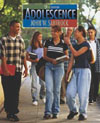5.1 What are the most desirable classroom and school size?
5.2 What are some benefits of a small school?
5.3 What are some of the drawbacks of large schools?
5.4 What are some benefits of a large school?
5.5 Which class size best benefits student learning?
5.6 What are the components of a positive classroom climate?
5.7 What is the authoritative strategy of classroom management?
5.8 What is the authoritarian strategy of classroom management?
5.9 What is the permissive strategy of classroom management?
5.10 To what variables are classroom climate generally linked?
5.11 What is the effect of school climate on student achievement?
5.14 Can a profile of a competent teacher be compiled?
5.15 How does parental involvement with schools change as students move into adolescence?
5.16 Why do student-teacher relationships often deteriorate after the transition to junior high?
5.17 Why is greater collaboration between schools, families, and communities needed?
5.18 What is Epstein's framework for improving parent involvement in adolescents' schooling?



 2003 McGraw-Hill Higher Education
2003 McGraw-Hill Higher Education

 2003 McGraw-Hill Higher Education
2003 McGraw-Hill Higher Education